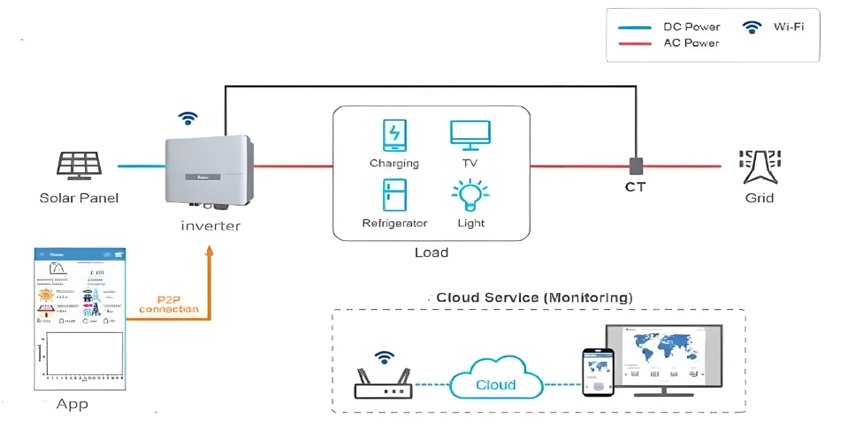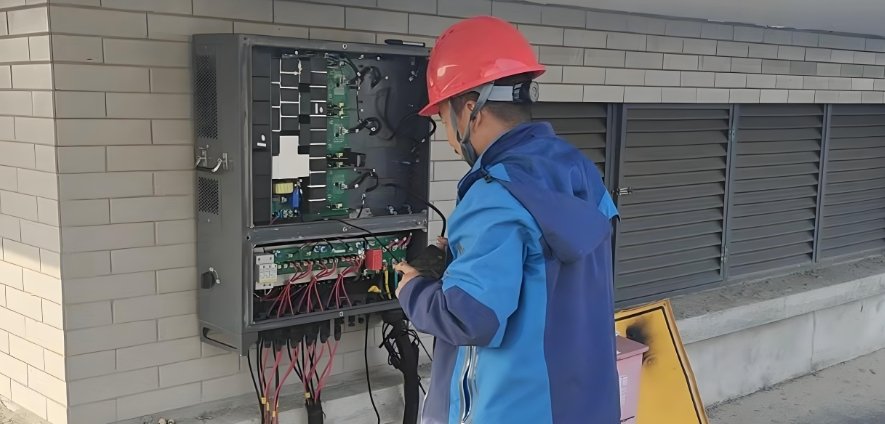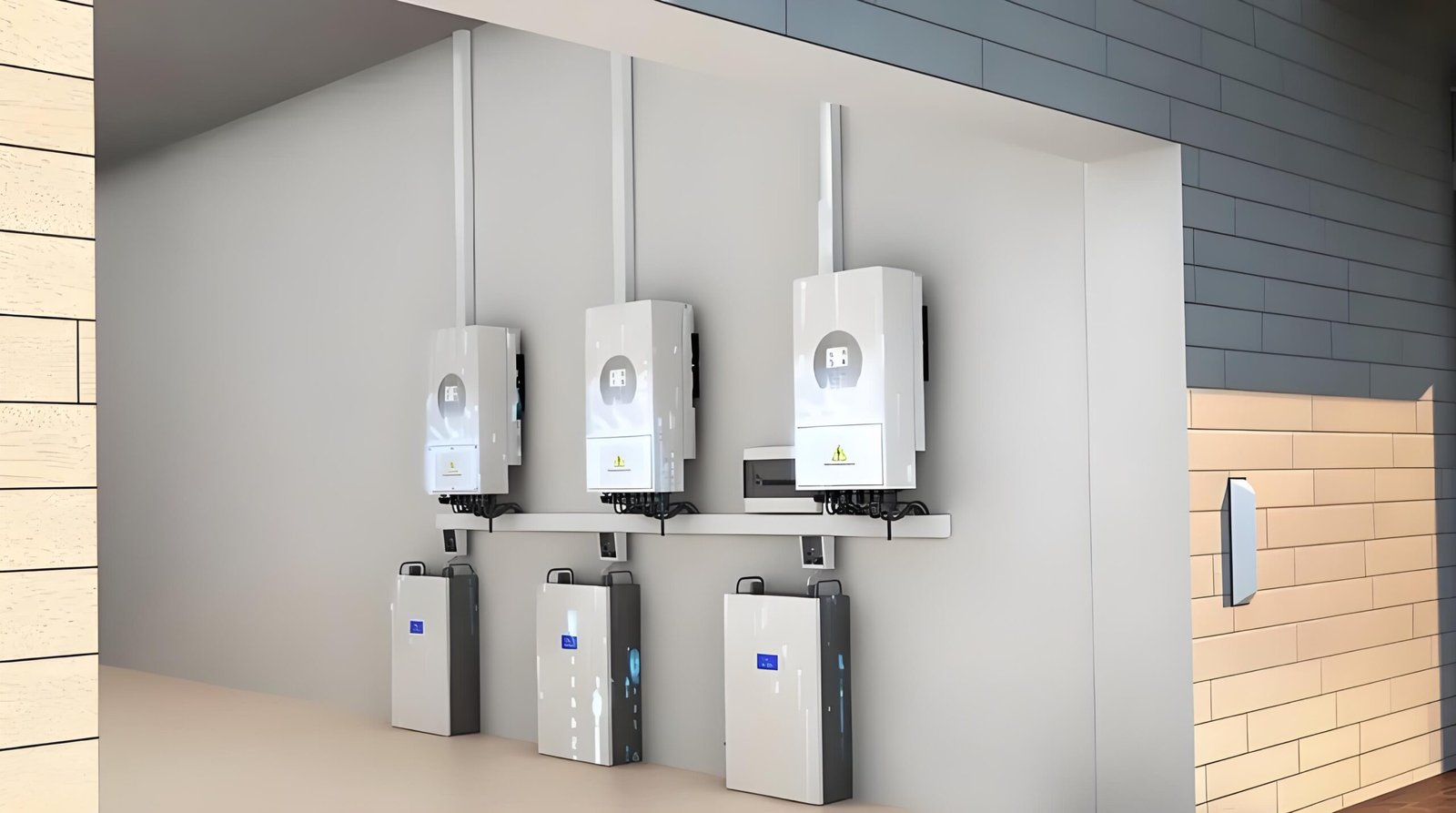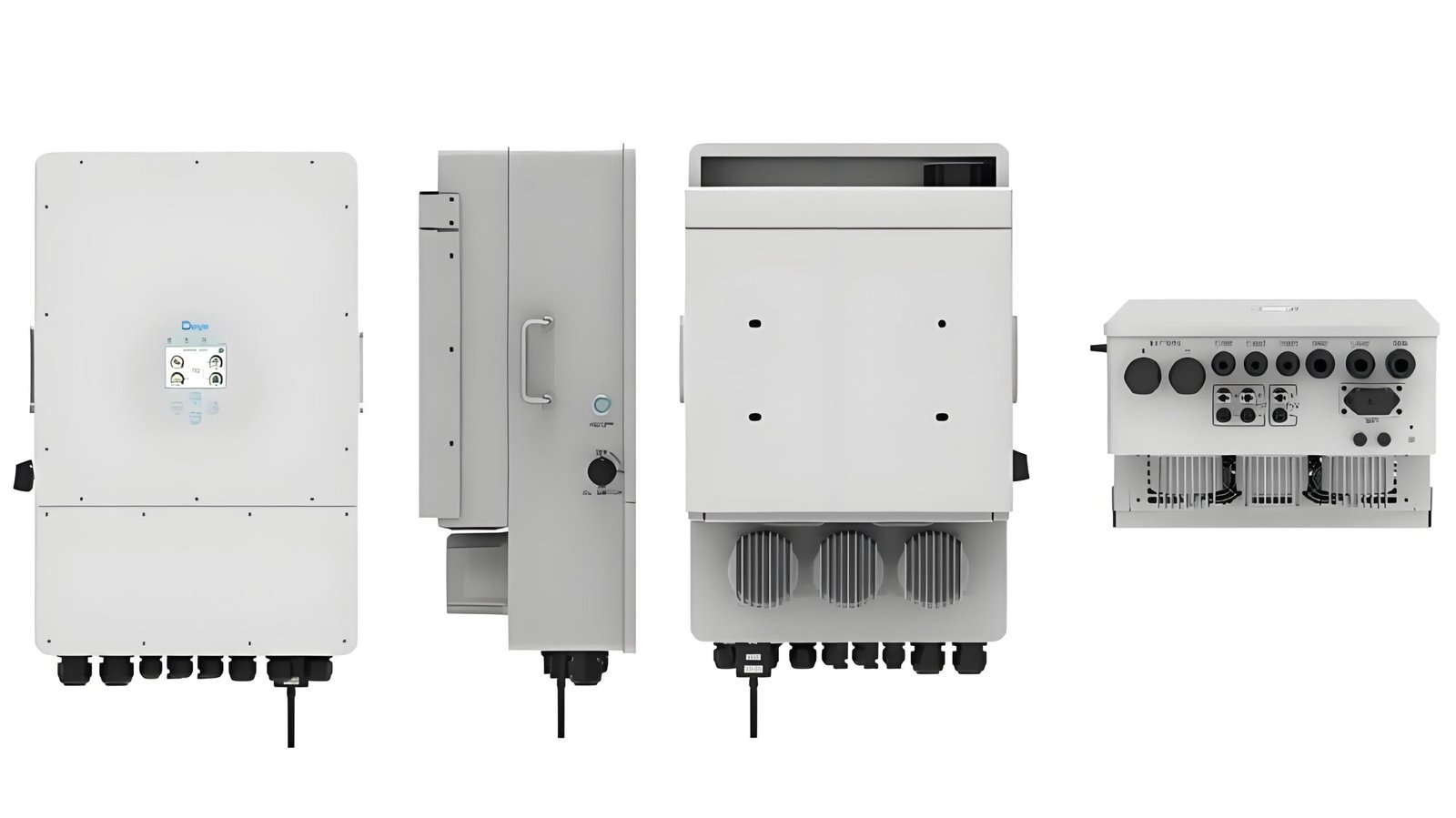MPPT Inverters are the best choice for maximizing the efficiency of your solar power system. By constantly tracking the optimal voltage and current to extract maximum power from solar panels, MPPT technology provides significant advantages in terms of energy production, system performance, and component longevity.
Maximum Power Point Tracking (MPPT) Technology
Maximum Power Point Tracking (MPPT)1 is a technology used in solar power systems to extract the maximum possible power from solar panels. Solar panels have an optimal voltage and current at which they operate most efficiently. MPPT inverters continuously monitor the output from solar panels and adjust the voltage to ensure they are always operating at the maximum power point.
MPPT works by constantly tracking the voltage and current from the solar panels and adjusting them to match the optimal level for maximum power output.
1. How MPPT Works
Solar panels' output varies depending on factors like temperature, light intensity, and age. An MPPT inverter continuously tracks the maximum power point by adjusting the voltage and current to ensure the panels always operate at their peak efficiency.
- Voltage and Current Adjustment: The inverter adjusts the voltage of the solar panels to keep the system operating at its most efficient point. This ensures the inverter extracts as much power as possible from the panels, even if light conditions change.
- Optimization: In essence, MPPT technology allows the solar system to “find” the most optimal voltage at which the panels produce maximum power, ensuring that power losses are minimized.
2. Energy Harvesting Efficiency
With MPPT technology, a solar system can harvest up to 30% more energy compared to systems without MPPT, especially during times of variable sunlight, such as cloudy days or early morning/evening hours.
| Technology | Description |
|---|---|
| MPPT | Maximizes power by adjusting to the optimal voltage |
| Non-MPPT | Fixed voltage regulation, less efficient under varying sunlight conditions |
Inverter with MPPT Charge Controller vs Regular Inverter
The key difference between an MPPT inverter with charge controller and a regular inverter lies in how they handle the input from solar panels and manage the energy conversion process.
MPPT inverters with charge controllers ensure that the solar system extracts maximum energy by adjusting the input voltage from the solar panels. Regular inverters, on the other hand, typically use a fixed or non-optimal input voltage, which can result in energy losses.
1. MPPT Inverter with Charge Controller
- Advanced Energy Harvesting: MPPT technology optimizes the energy harvested by constantly tracking and adjusting the input voltage to match the maximum power point of the solar panels.
- **Higher Power Efficiency: MPPT inverters generally provide higher efficiency, especially under changing sunlight conditions. This is particularly important for solar systems that are used in areas with frequent cloud cover or variable sunlight.
- Voltage Adjustment: MPPT inverters dynamically adjust voltage for optimal energy output, ensuring the system operates at maximum efficiency.
2. Regular Inverter
- Fixed Voltage: Regular inverters do not have MPPT technology. They typically operate at a fixed voltage, which can lead to less efficient energy conversion, especially during non-ideal sunlight conditions.
- **Lower Performance in Variable Light: Regular inverters are less efficient because they don’t adjust for changes in light intensity, making the system less optimal during cloudy or fluctuating sunlight conditions.
| Feature | MPPT Inverter with Charge Controller | Regular Inverter |
|---|---|---|
| Power Efficiency2 | High (up to 30% more energy harvested) | Lower efficiency, fixed voltage |
| Performance in Variable Light3 | Performs better under changing conditions | Less efficient under changing conditions |
| Voltage Adjustment4 | Constantly adjusts for optimal power output | Fixed voltage |
What Are the Advantages of a MPPT Solar Charge Controller?
The MPPT Solar Charge Controller is a crucial component of a solar energy system that manages the power coming from the solar panels and stores it in the batteries or supplies it to the inverter. Using an MPPT charge controller brings several significant advantages.
The MPPT charge controller maximizes the power extracted from the solar panels and ensures efficient energy storage, leading to a more reliable and cost-effective system.
1. Increased Energy Yield
MPPT controllers allow solar systems to capture more energy from the same number of panels. They can boost energy production by up to 30% compared to non-MPPT controllers, especially under cloudy or low-light conditions. This makes them an essential feature for solar systems that need to operate in less-than-ideal environments.
2. Better Battery Management
MPPT charge controllers deliver precise charging to batteries by adjusting the voltage and current according to the battery’s needs. This helps to prevent overcharging or undercharging, extending the lifespan of your battery system.
3. Optimized Power Conversion
MPPT technology ensures the power conversion process operates efficiently. It adjusts the solar panel’s voltage to match the inverter's maximum power point, minimizing energy losses and ensuring that the system is working at peak efficiency.
| Advantage | Description |
|---|---|
| Increased Energy Yield5 | Can boost energy production by up to 30% |
| Better Battery Management6 | Prevents overcharging or undercharging |
| Optimized Power Conversion7 | Maximizes energy output with reduced losses |
Why Choose MPPT Inverter?
Choosing an MPPT inverter provides numerous advantages for your solar power system, particularly in terms of efficiency and energy optimization.
Here’s why an MPPT inverter should be your top choice:
1. Higher Power Efficiency
MPPT inverters are highly efficient because they can adjust the solar panel voltage to extract the maximum amount of energy, even when sunlight is not constant. This leads to up to 30% more energy harvested compared to regular inverters, especially under low-light conditions.
2. Better Performance in Variable Sunlight
MPPT inverters are ideal for regions with fluctuating sunlight. If you live in an area with a lot of cloudy days or varying sunlight intensity, MPPT technology ensures that your system is always operating at peak efficiency, adapting to changing conditions.
3. Extended Lifespan of Solar System Components
By optimizing energy conversion and preventing overcharging, MPPT inverters and controllers can reduce wear and tear on batteries, panels, and other system components. This can extend the lifespan of your system and reduce long-term maintenance costs.
4. Enhanced System Reliability
MPPT inverters improve the overall reliability of your system by preventing energy losses and maintaining consistent power output. This ensures that your appliances, devices, or grid connection receive a stable and reliable power supply.
| Benefit | Description |
|---|---|
| Higher Power Efficiency | Up to 30% more energy harvested |
| Better Performance in Variable Sunlight | Ideal for fluctuating or low-light conditions |
| Extended Lifespan of Components | Reduces wear and tear on system components |
| Enhanced System Reliability | Provides consistent and stable power output |
Conclusion
Whether you're upgrading an existing system or installing a new one, choosing an MPPT inverter ensures you get the most out of your solar energy investment.
Footnote:
-
This link explains Maximum Power Point Tracking (MPPT) technology, its function in optimizing solar panel efficiency, and how it increases energy output. ↩
-
This link explains power efficiency, its role in optimizing energy conversion and how it impacts the performance of solar inverters. ↩
-
This link discusses performance in variable light, its significance in ensuring consistent energy output under changing sunlight conditions. ↩
-
This link explains voltage adjustment, its importance in extracting maximum power from solar panels, and how it enhances inverter performance. ↩
-
This link explains increased energy yield, detailing how MPPT controllers optimize solar energy capture and boost efficiency. ↩
-
This link highlights better battery management, showcasing how MPPT controllers prevent overcharging and extend battery life. ↩
-
This link discusses optimized power conversion, focusing on how MPPT adjusts voltage to maximize energy output and minimize losses. ↩







